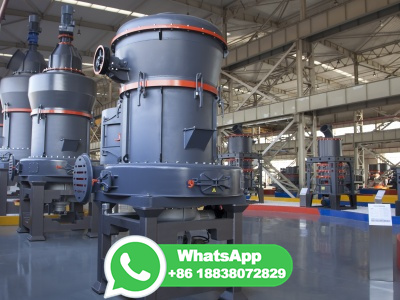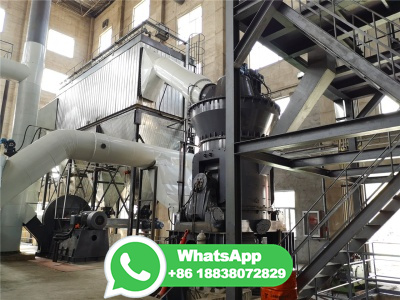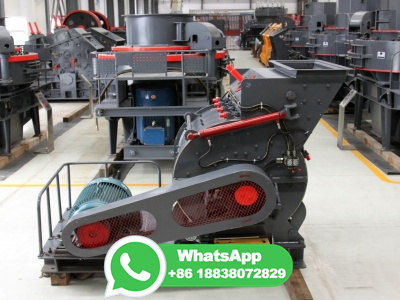
WEBJan 1, 2013 · Most appliions burn coal for small and large scale power generation, or use coal as a reductant in metallurgical appliions. ... Gasifiion of coal is a process whereby coal is converted to a syngas, which is predominately a mixture of carbon monoxide and hydrogen. ... and will be an important technology for reducing the .
WhatsApp: +86 18203695377
WEBNov 10, 2022 · Let us first deal with the prerequisites of the burning process and then look in detail at the influence of: the combustible material, oxygen, the ignition energy, the mixing ratio and the "fire alyst". ... Similarly, coal gas (containing CH 4, H 2, CO, H 2 S, NH 3, etc.), coal tar, and coke are obtained from hard coal. Both charcoal and ...
WhatsApp: +86 18203695377
WEBQuestion 2: Sulfur dioxide in the effluent gases from coalburning electric power plants is one of the principal causes of acid rain. One method for reducing SO2 emissions involves partial reduction of SO2 to H2S, followed by alytic conversion of the H2S and the remaining SO2 to elemental sulfur via the following overall reaction: 2 H2S(g) + SO2(g) .
WhatsApp: +86 18203695377
WEBMar 2, 2022 · A chemical process in which a substance reacts with oxygen to emit heat is called combustion. The substance that undergoes combustion is called combustible or fuel which can be solid, liquid or gas. In some cases, light is also emitted during combustion as a flame. burning of wood. Types of Combustion.
WhatsApp: +86 18203695377
WEBOct 23, 2019 · Cutting coal use isn't just about reducing greenhousegas emissions. Mining coal and then burning it pollutes our air, water, and soil with a wide variety of toxins.
WhatsApp: +86 18203695377
WEBJun 9, 2023 · Coal gasifiion is said to have greater efficiency than conventional coalburning because it can effectively use the gases twice: the coal gases are first cleansed of impurities and fired in a turbine to generate electricity. Then, the exhaust heat from the gas turbine can be captured and used to generate steam for a steam turbinegenerator.
WhatsApp: +86 18203695377
WEBJul 28, 2008 · This air pollution includes: Mercury: Coal plants are responsible for 42 percent of US mercury emissions, a toxic heavy metal that can damage the nervous, digestive, and immune systems, and is a serious threat to the child development. Just 1/70th of a teaspoon of mercury deposited on a 25acre lake can make the fish unsafe .
WhatsApp: +86 18203695377
WEBJan 9, 2020 · A combustion reaction is a major class of chemical reactions, commonly referred to as "burning." In the most general sense, combustion involves a reaction between any combustible material and an oxidizer to form an oxidized product. It usually occurs when a hydrocarbon reacts with oxygen to produce carbon dioxide and water. .
WhatsApp: +86 18203695377
WEBThis chart shows per capita CO2 emissions from coal, oil, gas, flaring, and cement, measured in tonnes of CO2 per year. The distribution across different fuel sources is very dependent on energy production and mix in a given country. In the US or the UK, for example, oil followed by gas are the largest contributors.
WhatsApp: +86 18203695377
WEBOct 19, 2023 · Fossil fuels are made from decomposing plants and animals. These fuels are found in Earth's crust and contain carbon and hydrogen, which can be burned for energy. Coal, oil, and natural gas are examples of fossil fuels. Coal is a material usually found in sedimentary rock deposits where rock and dead plant and animal matter are .
WhatsApp: +86 18203695377
WEBFeb 1, 2013 · Coal Gasifiion is another clean coal technology bypasses the conventional coal burning process altogether by converting coal into a gas. This method removes sulfur, nitrogen compounds and particulates, before the fuel is burned, making it as clean as natural gas. Coal was first used in gas production during the late 18th century.
WhatsApp: +86 18203695377
WEBApr 14, 2011 · Fracking is a process that splits deposits of natural gas deep underground, using high pressure chemicals. A new study at Cornell has revealed that the process releases large quantities of methane, and other harmful gases, yielding 20% more global warming per unit than coal. The process, also called hydraulic fracturing, creates open .
WhatsApp: +86 18203695377
WEBBurning coal provided the necessary heat energy to convert a tank of water into steam. The steam was converted to mechanical energy and channeled out to power machines in industrial mills and factories. Therefore steam became the new form of energy source that substituted conventional water, wind, and animalpower operations.
WhatsApp: +86 18203695377
WEBThermalbased power plants can produce electricity from coal or other fuel sources. The coalfired process requires three different steps to turn energy released from burning coal to generating electricity for consumption. Coal fired power plants, while producing power, require a lot of water and produce a lot of pollutants like ash and CO2. Learn how the .
WhatsApp: +86 18203695377
WEBOct 19, 2023 · Natural gas is a fossil other fossil fuels such as coal and oil, natural gas forms from the plants, animals, and microorganisms that lived millions of years ago. There are several different theories to explain how fossil fuels are formed. The most prevalent theory is that they form underground, under intense conditions. As plants, .
WhatsApp: +86 18203695377
WEBMay 6, 2022 · Peng et al. ( 2021) estimated that the life cycle VOC emissions during the coalpower plant process contributed × 10 –2 − × 10 –2 (kg/MWh). According to the 2017 national emission inventory, the USA's coalfuelled electricity generation contributed 17 × 10 3 tons of VOCs, 22% reduced from 2014 (USEPA 2021 ).
WhatsApp: +86 18203695377
WEBCoal is a combustible black or brownishblack sedimentary rock with a high amount of carbon and hydrocarbons. Coal is classified as a nonrenewable energy source because it takes millions of years to form. Coal contains the energy stored by plants that lived hundreds of millions of years ago in swampy forests. Layers of dirt and rock covered the ...
WhatsApp: +86 18203695377
WEBUnderground coal gasifiion (UCG) is an industrial process which converts coal into product gas. UCG is an insitu gasifiion process, carried out in nonmined coal seams using injection of oxidants and steam. The product gas is brought to the surface through production wells drilled from the surface. The predominant product gases are methane, .
WhatsApp: +86 18203695377
WEBJan 1, 1993 · Sulfur isotopic characteristics of coal in China and sulfur isotopic fractionation during coalburning process. ... also found in the atmospheric oxidation processes of gas (SO 2 )toparticle (SO ...
WhatsApp: +86 18203695377
WEBApr 10, 2011 · Study: Gas from 'fracking' worse than coal on climate. Cornell University professors will soon publish research that concludes natural gas produced with a drilling method called "hydraulic ...
WhatsApp: +86 18203695377
WEBOct 4, 2021 · For centuries, coal has been key to the industrial revolution around the world. While coal played a major role in the development of the modern world, it is also the primary reason behind climate change: according to 2019 data from the International Energy Agency (IEA), coal burning is responsible for more than 40 per cent of global .
WhatsApp: +86 18203695377
WEBJan 19, 2023 · CSC is the contradictory development result of the coal oxidation exothermic and environmental heat dissipation [1, 2].Goaf is the key prevention and control area of CSC in underground mining [3, 4].Once there is a spontaneous combustion hazard, closing fire zone and inerting [5, 6], installing grout [7, 8] and pumping inert gases [9, 10] are the .
WhatsApp: +86 18203695377
WEBJul 15, 2023 · coal burning contributes a large proportion of fine particulate matter (PM ), black carbon (BC), organic carbon (OC), and CO emissions in lab or field investigations generally measured shortterm emissions from heating coal stoves, and only covered the high power phase or the flaming combustion .
WhatsApp: +86 18203695377